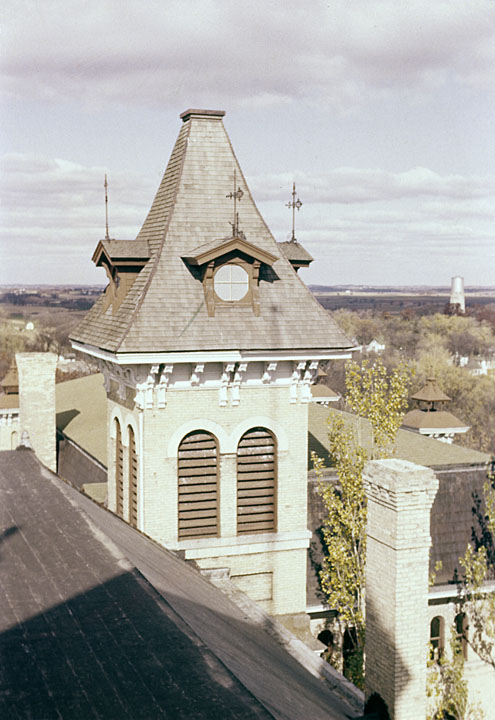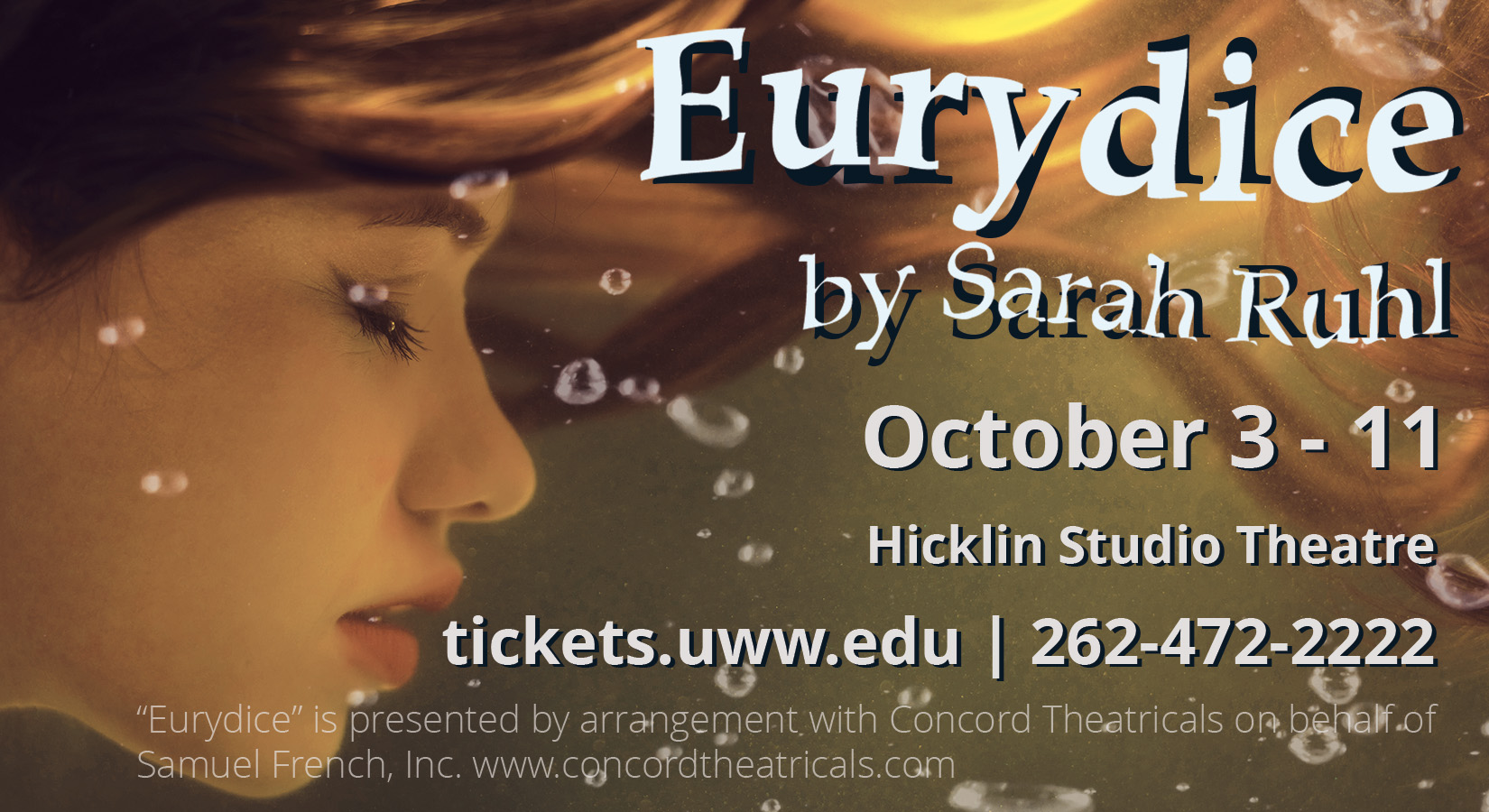Carillon of the bells
Campus bells intertwined with history of the university
When first constructed in 1868 the university’s bell would ring out at noon each day from atop Old Main Hall’s north tower.
September 24, 2018
Do you ever wonder about the bells you hear ring every day on around the University of Wisconsin-Whitewater campus?
To many, the bells are just background noise as they traverse campus, but few actually know the history behind them and their value to the community.
The first time a bell rang across the UW-W campus was when Old Main was constructed in 1868. In 1872, the Normal Bell cracked, and a replacement was purchased on Sept. 16, 1873, according to Mary Janette Bohi’s 1967 book titled “A History of Wisconsin State University Whitewater 1868-1968.” The new bell would be rung from the north tower atop Old Main.
Leo P. Schleck, a 1911 graduate of what was then Whitewater Normal School, would climb up to the top of the north bell tower of Old Main to ring the bell each day at noon. Albert Salisbury, who was the president of Whitewater Normal School at the time, would often scold Schleck about the dangers of ringing the bell, advising him to lengthen the rope attached to the Normal Bell, according to a 2009 write-up about the history of the bells by former James R. Connor University Center (UC) public relations assistant Tasha Mills.
The ringing of the Normal Bell would remain a custom until 1965. In 1965, a representative from the Schulmerich Company suggested to the university to try one of their carillon systems on a trial basis, which was said to have started May 17, 1965, according to a Royal Purple article from June 29, 1965.
The main unit of the carillon, which contained the bells and clock, was located in the basement of the University Center. The smaller console of the carillon and keyboard was located in the south lounge of the University Center. The production apparatus, which included a small keyboard identical to the one in the University Center, would be placed in the north tower of Old Main with speakers wired to it, sharing occupancy with the Normal Bell.
The carillon system’s trial lasted until Leo P. Schleck donated enough funding to purchase the carillon system and speakers at a price of $14,700 (equivalent to $117,230.64 in July 2018). The system was dedicated in honor of Leo P. Schleck and his family as the Leo P. Schleck Memorial Carillon. The then newly acquired carillon system first rang at 11:15 a.m. during the carillon’s dedication ceremony Oct. 30, 1965.
The carillon system’s production apparatus and speakers would remain in the north tower until a fire broke out Feb. 7, 1970, destroying Old Main and the tower that housed the Normal Bell, speakers and carillon production apparatus. The fire-ridden portions were demolished later that year. The fire was declared a result of arson, which to this day has yet to yield a suspect. The East Wing of Old Main, now Hyer Hall, is the only salvaged segment of the building.
The Normal Bell that rang atop Old Main, which dated back to 1873, was retrieved from the fire and restored. It’s now displayed in front of the Alumni Center, which sits on the former Old Main footprint. Lois Duffin Fritschler, a 1917 alumna, donated funds to restore the bell.
Through in-depth research with Archives Assistant Deronica Goldsmith of the Archives and Area Research Center (AARC), speakers were found to be added to the south tower possibly as early as the 1920’s, according to numerous archived pictures of Old Main’s south tower. Due to lack of conclusive evidence, it cannot be determined whether these speakers were utilized to project the sounds of the carillon system and public address announcements.
Also retrieved were the original rolls of music the carillon would play automatically. Currently, the rolls of music are stored in the AARC.
Because the original speakers for the carillon system were lost in the fire, the university installed makeshift speakers atop Hamilton Gymnasium until they were declared unworkable in 1974.
In 1978, student organizations raised enough money to install new speakers atop Winther Hall. During the remodeling of the current UC in 2006, key communication wires from the carillon’s programming unit and speakers were cut, said Kim Adams, assistant director of the UC.
After the fire, the university had plans to rebuild the south tower of Old Main where the Alumni Center currently sits, according to former UC arts manager, Chloe Rettinger. Because the south tower was one of Old Main’s most defining aspects, the reconstruction of the tower would have served as a memorial for the hailed structure once adorning the campus.
“At first, there was a lot of enthusiasm and excitement about it, but as time went on, I think it became harder to raise the funds. That’s why it was redirected from the tower to the Alumni Center. That is why the Alumni Center has a reminiscent look of Old Main, a very mini version of Old Main,” speculated Rettinger.
Three years of silence later, UW-W received donations from the graduating classes of winter 2008, spring 2009 and the James R. Connor University Center to buy a new Schulmerich Carillon system. The new carillon system was installed in April 2009. The system is now housed on the fifth floor of Hyland Hall with speakers on the roof, according to Mills’ document.
Hyland Hall was chosen as the location of the current carillon because of its height and central location, according to Adams.
The new carillon made its debut May 18, 2009. It was rededicated in memory of Leo P. Schleck Nov. 2, 2009. The carillon sounded at 11:15 a.m., which was the same time the former carillon debuted Oct. 30, 1965.
The original carillon saved from the 1970 fire is currently displayed on the second floor of the UC with a few rolls of the original sheet music, a plaque honoring Leo P. Schleck and other artifacts. Adjacent the display is Mills’ write up referred to in this article.
Currently, the official UW-W seal contains a depiction of a silhouette of the 1897 south addition to Old Main. Although the silhouette depicts a bell tower, there is no evidence to suggest or prove the Normal Bell ever resided within the south tower.
Given the rich history of the bells on the UW-W campus, they represent the university’s treasured past in an audible form. Today, history still resonates throughout campus as UW-W celebrates its sesquicentennial anniversary. As students traverse the UW-W campus or the surrounding area and hear that Westminster Chime, they might ponder the rich history the bells represent.















Brian Kirley • Oct 25, 2018 at 9:01 am
RE: Carillon of the bells
Wonderful insight to the daily bell tones I hear walking my dog. Thank you,
Brian